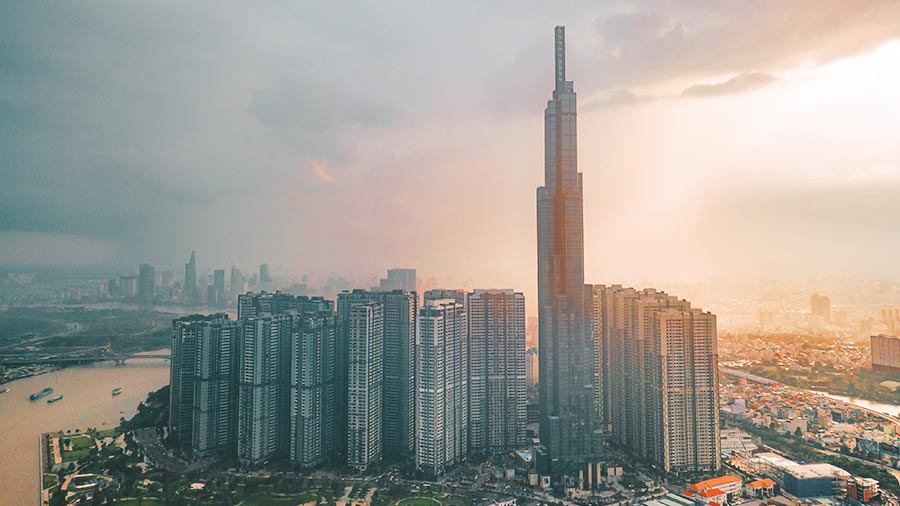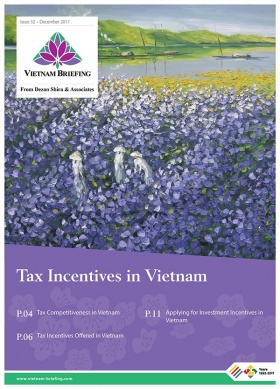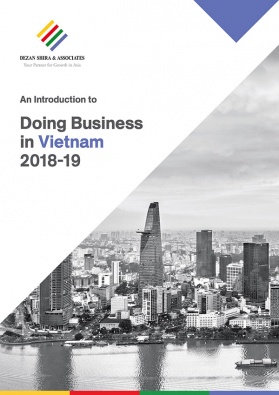Opportunities in the Waste-to-Energy Sector in Vietnam
With the rise in urbanization from 2004 to 2015, waste generated in Vietnam increased from 15.6 million tons to 27.8 million tons annually, an increase of 78.2 percent. The majority of the waste collected ends up in landfills, which contaminates the ground and surface water, increases pollutants, and affects public health. Waste-to-energy technologies offer a cost-effective solution that has the potential of reducing waste volume by 90 percent and generating energy for the urban areas.
Growing energy demand
Energy demand in Vietnam is predicted to grow over 10 percent by 2020, and eight percent by 2030. In addition, due to rapid urbanization, electricity consumption will increase fourfold by 2030, compared to 2014. To manage the growing demand, the government has implemented numerous policies in the clean energy sector in the last five years, including ones focusing on waste-to-energy solutions.
The potential for energy generated from biomass and solid waste is around 2000 MW and 320 MW respectively. However, current installed capacity is much less at 352 MW and 2.4 MW for biomass and solid wastes respectively.
Waste-to-energy sector
Currently, Vietnam annually generates over 28 million tonnes of waste, with 76 percent of it being disposed in landfills. Waste-to-energy solutions can not only process solid wastes but also generate energy. Vietnam can produce around one billion kWh in 2020, and six billion kWh in 2050 from waste.
The government has set targets for the collection, reuse, and recycling of waste. By 2020, it aims to collect and treat 90 percent of urban solid waste, with 85 percent of it being recycled and reused.
Major waste-to-energy projects
In February 2018, the Asian Development Bank and China Everbright International Limited signed a US$100 million loan agreement to construct waste-to-energy plants in Mekong Delta, which will not only treat solid wastes but also supply electricity to the national grid. It is the first public-private partnership project in the sector.
Last year, in April 2017, Vietnam’s first industrial waste-to-energy plant was set up in Hanoi, with equipment from Japan’s Hitachi Zosen Corporation. It can process 75 tonnes of waste per day and generate 1.93 MW of energy. A total of US$29 million was invested in the project, with US$22.5 million being non-refundable aid from Japan’s New Energy and Industrial Technology Development Organization (NEDO), a governmental organization that focuses on research and development of industrial technology in new energy solutions.
In the same month, the Go Cat plant became operational in Ho Chi Minh City, which has already treated 500 tons of industrial waste and generated seven megawatts for the national grid.
Future projects are focusing on increasing the number and capacity of waste-to-energy plants in Hanoi, Ho Chi Minh City, and Mekong Delta. Some of the major investors include Hitachi Zosen Corporation, Watrec Ltd, and Trisun Green Energy Corporation.
Opportunities
Vietnam plans to reduce greenhouse gas emissions by five percent by 2020, 25 percent by 2030, and 45 percent by 2050. With the rise in urbanization and electricity consumption, clean energy offers an environmental-friendly solution to meet the growing demand. Local firms lack the technical expertise and capital, and this presents an opportunity for investors. Some of the opportunities are in:
- Machinery/Equipment – collection and sorting equipment, waste processing equipment, and incinerators;
- Technical expertise – processing and recycling technologies, waste management solutions, plant design and engineering solutions; and
- Funding and financing – investing capital in upcoming and existing plants, and working with engineering firms and municipal governments.
Government policies
The government has implemented numerous policies for domestic as well as foreign firms involved in waste-to-energy projects. The major regulations are mentioned in Decision 31/2014/QD-TTg (“Decision 31”), Circular 32/2015/TT-BCT (“Circular 32”), and Decree 118/2015/ND-CP (“Decree 118”).
- Decision 31 – stipulates the supporting mechanism or development of power generation projects using solid waste;
- Circular 32 – deals with the development of grid-tied generation projects using solid wastes and provides a model electricity sale contract for projects using solid wastes in Vietnam; and
- Decree 118 – deals with investment incentives and schemes in various sectors including construction of concentrated solid waste treatment zones and collection, treatment, recycling, and reuse of waste.
The feed-in-tariff for power generation projects using solid waste is 10.05 U.S. cents per kWh (direct burning) and 7.28 U.S. cents per kWh (burning of gases from landfills). Incentives include tax holidays, exemption of import duties for equipment, land rent exemptions, and low-interest loans.
Although the potential of solar and wind energy is much higher than solid wastes in Vietnam, waste-to-energy projects have a two-fold benefit: It helps in generating energy and the processing of waste, which has grown exponentially in urban Vietnam.
In addition to increasing investments in new plants or capacity expansion of existing facilities, the government also needs to focus on promoting research in cleantech and support the domestic firms financially as its take time to recover capital investments in the sector.
About Us
Vietnam Briefing is produced by Dezan Shira & Associates. The firm assists foreign investors throughout Asia from offices across the world, including in Hanoi and Ho Chi Minh City. Readers may write to vietnam@dezshira.com for more support on doing business in Vietnam.
- Previous Article Vietnam Reduces Restrictions on Sales Promotion Activities
- Next Article Vietnam Legalizes Sports Betting






























